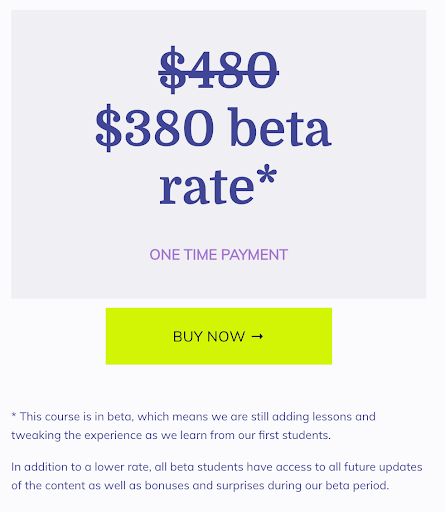
5 Tips for Turning Your Social Media Following Into a Paid Membership Community
A community business strategist gives her best tips for monetizing your social media audience through the power of community.
Founder of The Business of Community
When I was building a social media audience for an e-commerce company I ran a few years ago, the go-to options for monetizing that audience never appealed to me. It felt like advertising or brand sponsorships would water down the content. Plus, I never liked the idea of monetizing an audience for the sake of doing so—I wanted to create something so meaningful that people wanted to support my work by paying for it.
That’s just one of the reasons I fell into the world of paid membership communities as a way to build a sustainable business around a social media audience. Not only is it a more independent way to build revenue around social media content, it allows for more meaningful connections with an audience.
Over the past five years as a community business strategist, I’ve worked with creators of all sizes to build communities that are profitable and fulfilling. So, if you’re considering incorporating a membership community as a line of revenue in your content business, here are my best pieces of advice.
1. Find a community purpose that isn’t about you
When creators start thinking about adding a paid tier to their social media activity, they often plan to give members more of what they’re already doing: more content, more in-depth content, or more access to them as a creator.
I don’t recommend this approach, for two reasons. First, because it requires you to show up a lot more intensely for your community members, which can lead to creator burnout.
But more importantly, putting yourself on a pedestal isn’t what community is about. I like to think of social media as a triangle—a broadcast channel with one voice at the top sharing—and of community as a circle where everyone is on an equal plane. When creators treat communities as a private place where they broadcast what they think to their “fans,” it can end up alienating them from the community. The more you can feel like you’re a member of your own community, the better experience you can create for people.
The idea is to identify a value or purpose that your followers share and create a space for them to connect with each other around that. Tiffany Yu’s membership community is a great example of that. She’s a disability influencer and advocate with a goal of elevating disability pride. Instead of creating a membership community to share more of her experience as a disabled woman, she’s kept that content free and focused her community on helping other people who want to be leaders in the disability space thrive.
2. Define your member growth journey
One of the first questions I always get about starting a paid membership community is: Which platform should I use to host it on? While I do have some favorites (currently Circle and Heartbeat), I always emphasize that the platform you use is less important than the experience you build.
My definition of community is a group of people who come together to nurture their own and one another’s growth, so I like to focus on that when helping my clients create a meaningful experience to provide to their members. We do this by thinking through the following questions:
- Who are your members when they arrive at the community?
- Who do they ideally want to become?
- What do they have to do to become that?
Your job as a community leader is to architect an experience that guides people through the steps that come out of question three and helps them grow from point A to point B.
When people arrive at my community, they are creators, coaches, and other founders who care about community and want to find a way to center it in their business. By the end, they become leaders of successful community businesses that bring in sustainable recurring revenue. To become that, they go through our step-by-step course and also learn through their experience of being in community with other people.
3. Choose your connection to learning ratio
Growth within communities can happen in two ways: connection and learning. Determining your ideal ratio of the two is an important part of defining your community experience and of understanding what will be required of you as a community leader.
For instance, in communities that are very learning based, members have access to a ton of digital classes, exclusive workshops, or other educational assets, then perhaps they connect with others on a call once or twice per month. For example, the course community Notion Mastery prioritizes growth through the learning journey of their evergreen course. Students have the opportunity to connect with others both in an asynchronous community platform and in live events like monthly office hours.
Then, there are communities on the other end of the spectrum, where the community isn’t providing many resources for learning but is instead serving as a catalyst for connecting people who can provide those resources. For instance, Dreamers & Doers is all about bringing business owners together to teach and support each other. The growth happens by connecting with other members who can answer a business question or provide accountability as you grow. Even their educational events tend to focus on showcasing the expertise of their members.

Some communities are a more even balance of the two. When considering your own ratio, think about your current content on social media. How much of it is you educating your audience? How much of it is you fostering a sense of connection around a common experience? Can you put a rough ratio to it? This may be a good place to start with your community experience as well.
Whatever you choose, it’s important to tell your community of how you’ll be showing up for them. If you want this to be a super chatty community focused on connection, you’ll want to show up regularly to moderate. If it’s a more learning-focused community, you may want to explain when you’ll be available to answer questions. You can make your own schedule and show up however makes sense for you, as long as you set those expectations from the beginning.
4. Charge enough to make this worth your time
Onto the big, looming question: What should you charge for your membership community?
My approach to building a business based around community is rooted in paying yourself enough that you can be profitable and feel like the payout is worth your time even with a small number of members. The reality is, even if you have a decent number of social media followers, only a small percentage of those are going to convert into community members (often less than three percent, and that number decreases as your following increases). Unless you’re an influencer with hundreds of millions of followers, low-cost subscriptions are more trouble than they’re worth. I encourage everyone I work with to build an experience they feel comfortable charging each member at least $40 per month for. You may get fewer members, but you’ll provide more value and ensure higher revenue.
There's a lot of fear around charging people when you’ve been posting content for free. But there’s also a lot of power in knowing that, if you create a strong enough experience, you will find those who are willing to pay you well for your work.
5. Start small, then let your community grow alongside you
If you’re nervous about launching a paid membership community, I encourage you to find a small way to get started.
There are many ways to test your ideas for a membership before going all in. Hosting a one-time event, a short-term community experience, or a weekend virtual retreat are great to test how your audience reacts to your concept and how you feel running this type of business. (After all, you might decide it’s not for you!)
As you do this, I'm a big fan of inviting your audience into your process. Share that it’s something new for you and that you’re excited to try it out. Let them know what to expect from this early experience: that it might be a little rough around the edges and that you’re going to want their feedback and ideas. I’m currently doing this with my 90 Days to Launch course and community, offering a discount beta rate with clear expectations on what students can expect.

When you do this well—when you build alongside those first members and still provide them a thoughtful experience—they’re going to be able to help tell the story of your community and bring in new members when you’re ready to grow.
Try Buffer for free
140,000+ small businesses like yours use Buffer to build their brand on social media every month
Get started nowRelated Articles

Sending ads by mail may seem like a thing of the past, but this marketer thinks it’s a surprisingly effective approach for e-commerce brands.

In this article, get answers to questions about social media for solopreneurs.

Earth Day is one of the (many) days when businesses can create or reaffirm a commitment to practicing sustainability. Here are some ideas for small businesses looking to highlight Earth Day on Instagram.